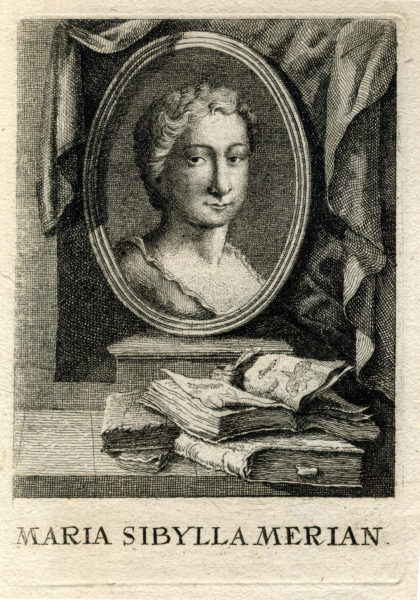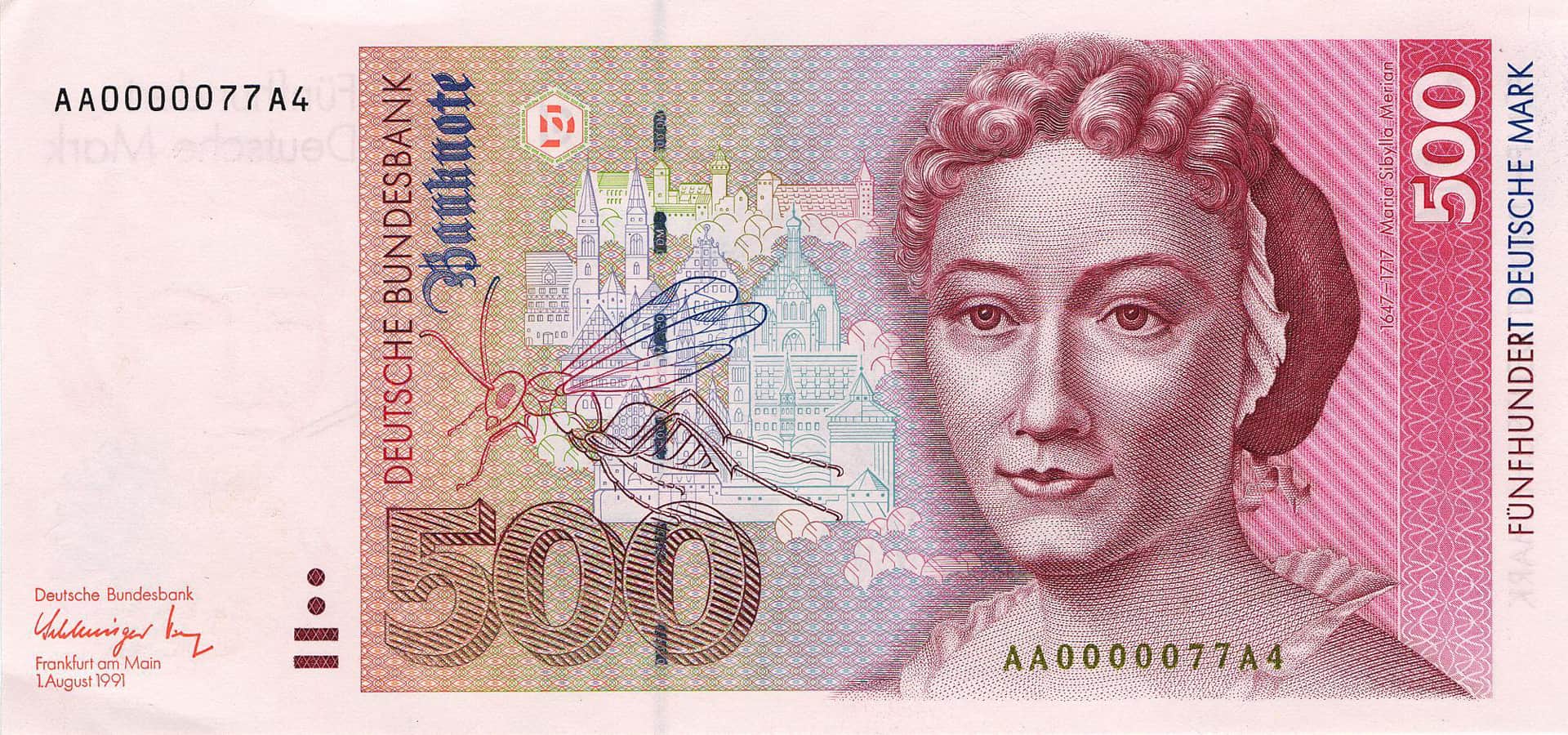FICTIONAL "BEAUTIFICATION" OF HER PORTRAIT IN OLD AGE
In the etching from the joint Dutch edition of all the three Caterpillar Books (1717) Maria Sibylle Merian appears harsh, and even repellent to some, if the print is not coloured and the black lines dominate. This is why many artists have tried to take the portrait of her as an old lady as a blueprint and to develop a younger, ideal image. The wish for a portrait of Maria Sibylle Merian at the height of her creativity was understandably huge. The choice of images enhanced by such fictitious "rejuvenation" is almost unlimited.
They reflect both the different perception on the part of the various artists and the fashion of their own times. This applies both to her clothing and to the decorative objects arranged around her.
Two of the most popular examples date from the Rococo and show an astonishing variety, although they were created around 1760, only 14 years apart.
The plain portrait (left) was selected for the online dual exhibition of works by Johann Andreas Graff at Google Arts & Culture, which has been available since 2019 and can be clicked on at any time. The merry picture with the playful putti (right) was the opener to an exhibition in the Nuremberg City Archive which was dedicated to Merian’s time in this city (2017) and was adorned for this purpose with a lavish frame.
In the course of her life, M. S. Merian became a business woman, but she would certainly never have dreamed that her portrait could even be found on means of payment:
Compared with the oil painting of the 32-year-old Maria Sibylla in Basel, these hypothetical rejuvenations may not always seem convincing. Nevertheless, they are interesting additions for scientific research. They show how great and sustained the interest in Merian has been over the centuries.
Every piece of research and every historical novel also reflects the respective spirit of the age. Everyone who studies the extraordinary personality of Maria Sibylla Merian makes "his or her own image" of her in words or in the fine arts, one shaped by paintings, drawings, etchings, influenced by the respective “Zeitgeist”.
“MERIANIN 2018+” also interferes and has had a letter card printed as a small gift for people who work actively for the protection of insects. On this card, the painter Michael Mathias Prechtl (1926-2003) shows Maria Sibylla Merian in semi-profile in a modern, artistically modified silhouette, hiding her face behind a half-mask in the shape of a butterfly.







